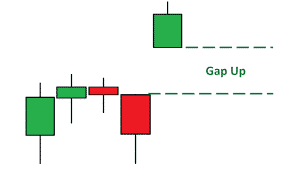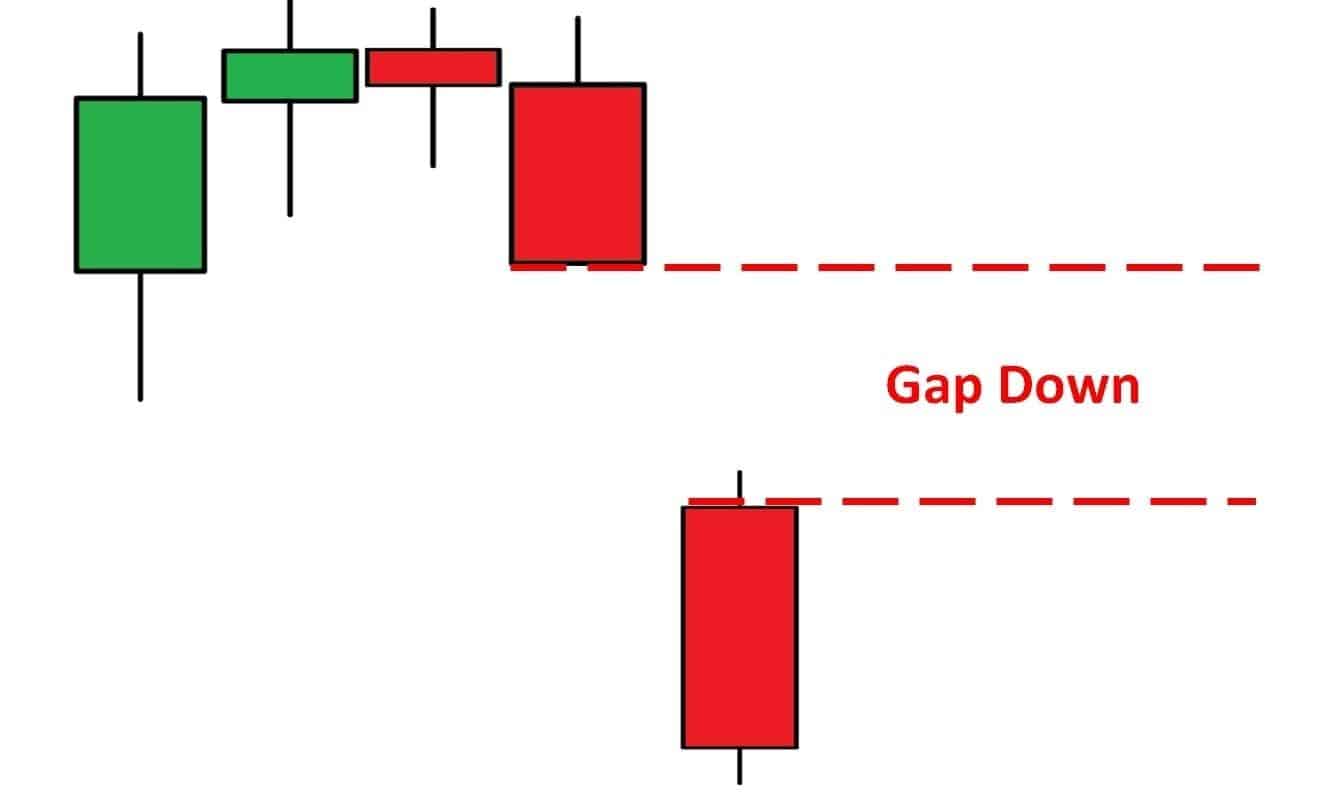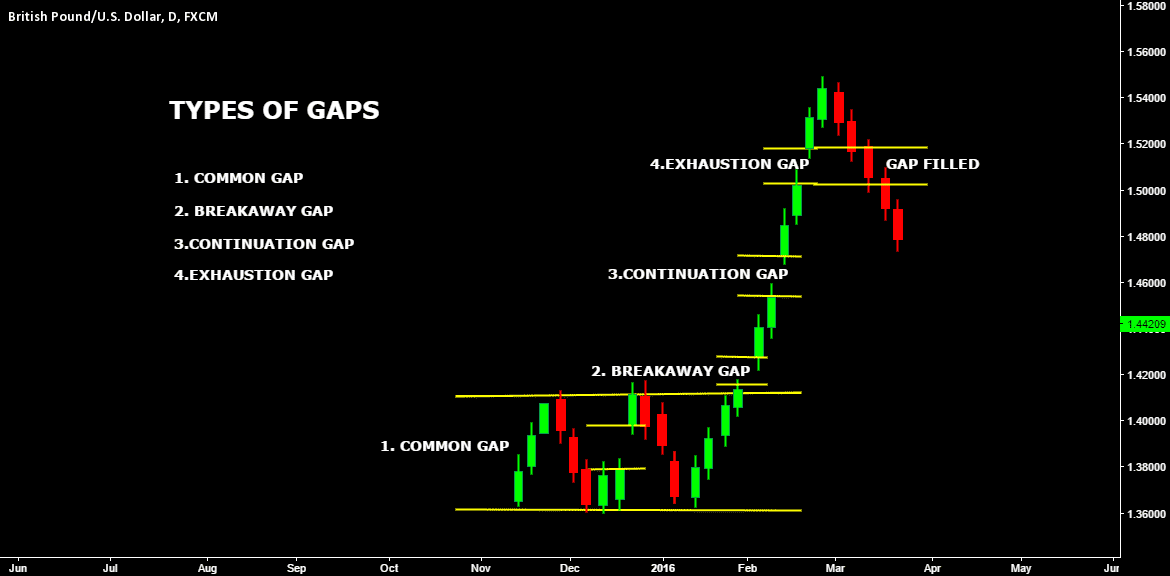The gap is one of the most important technical analysis tools for predicting trend shifts and their direct relation to supply and demand. Traders frequently use this in intraday trading with a lower time frame price chart. Since the beginning of the technical analysis of price action, a gap has piqued trader’s interest.
A gap is one of the easiest patterns to identify. However, just because a pattern is simple to recognize doesn’t mean it’s simple to trade. Gap trading, like any other trading strategy, requires skills, practice, and patience.
What is a gap trading strategy?
In forex, a gap is defined as the empty space between the closing price of one candle and the opening price of the next. The reason for a market gap is a sharp price movement up or down as a result of fundamental and technical elements, especially if major news has been released. As a result, there is little or no trade in the interim. This implies an anomaly in the currency regular price pattern, which is referred to as a Gap.
Let’s see the examples of two gaps in the charts below.


A gap up occurs when a currency makes a huge move to the upside over a long period of time. A gap down occurs when a currency makes a huge move down over a long period of time.
Types of price gaps
Common gaps
These gaps are more common in markets that are calm and have a trend rather than those that are trendless. After an upside gap, there are no new highs, and after a downside gap, there are no new lows. On the day of a typical gap, there is a little increase in volume, which then returns to ordinary volume in the following days. The lack of new highs and lows indicates a lack of optimistic and negative emotions. These gaps are more likely to appear in pricing congestion patterns,
Breakaway gaps
When the price breaks out of a support or resistance zone, this type of gap occurs. By one gap, the price breaks out of the resistance zone (gap up). The market is most likely to resume its upward trend. In addition, the gap up transforms into a support zone. If not, the price may gap out of the support zone by one gap (gap down). The likelihood of the market entering a downturn is high. The gap down is now a zone of resistance.
Exhaustion gaps
These gaps are linked to sudden, widespread advancements or declines. It is not followed by new highs during uptrends, and it is not followed by new lows during downtrends. Only when prices revert and close does it become confirmed.
Continuation or runaway gaps
These gaps appear in the middle of a strong trend, that is, a trend that is making higher highs or lower lows without filling the gap.
In the chart below, you can see all previously described kinds of gaps, culminating in the exhaustion gap, that signified the end of the uptrend once the last gap got filled.

In general, gaps signify a continuation of the movement in which they occur.
Gap trading strategies
Gap size strategy
The size of the gap is the most popular way of analyzing gaps and their possibility of being filled the same day. The smaller the gap, as you might think, the more likely it was to fill. Of course, the smaller gaps provide less move potential, and a single large gap loser against a trader can wipe out a string of modest winners.
Gap zone strategy
Because it integrates gap size, previous day trend, and trader mentality, the gap zone dimension is quite significant. Although it appears to be counterintuitive at first, it is actually fairly rational. For example, a gap up above the high of a prior up day (the prior day’s close was greater than its open) may be more likely to attract profit-taking at the first sign of resistance than a gap up above the high of a prior down day (prior day’s close was less than its open), which would be a reversal of the prior day’s trend and may be more likely to attract new buyers and short covering.
Seasonality strategy
Seasonality refers to historical patterns depending on a variety of calendar factors. Some days or months appear to have a higher chance of success than others. Win rates are higher towards the middle of the week, and success rates differ depending on the direction of the gap fading. The lowest overall win rates are found in May and September, which are traditionally transitional months for traders heading into the summer holidays. Studies of seasonality can be expanded to include the day of the month and even zone-specific seasonality.
Stop size strategy
Choosing a successful gap technique is only half the battle; the other half is determining the best size stop and target price. The lower the win rate, the smaller the stop loss, and the greater the win rate, the larger the stop loss. The idea is to strike a balance between the two that gives you the best chance of success while staying within your risk tolerance.
Target optimization strategy
The profitability of your gap trading technique is dependent on target optimization. Setting a goal after conducting a thorough study will help one avoid losing money. Targets can be changed based on the current trend.
For example, if a trade is profitable and the market gaps in the trader’s favor while previously demonstrating a history of trend continuation after the gap, one would not want to cut profits short. As a result, extended targets can be used in a variety of gap setups.
Conclusion
Large jumps in currency values can benefit traders if they can be turned into opportunities. Gaps are places on a chart where a currency’s price surges dramatically up or down with little or no trading in between. As a result, there is a gap in the normal price pattern on the asset’s chart.
Many forex traders are able to interpret and profit from these gaps. Exhaustion gaps, continuation gaps, breakaway gaps, and common gaps are all main types of gaps. Gap size strategy, gap zone strategy, seasonality strategy, and stop size strategy are some of the strategies that can be used during gap trading.
